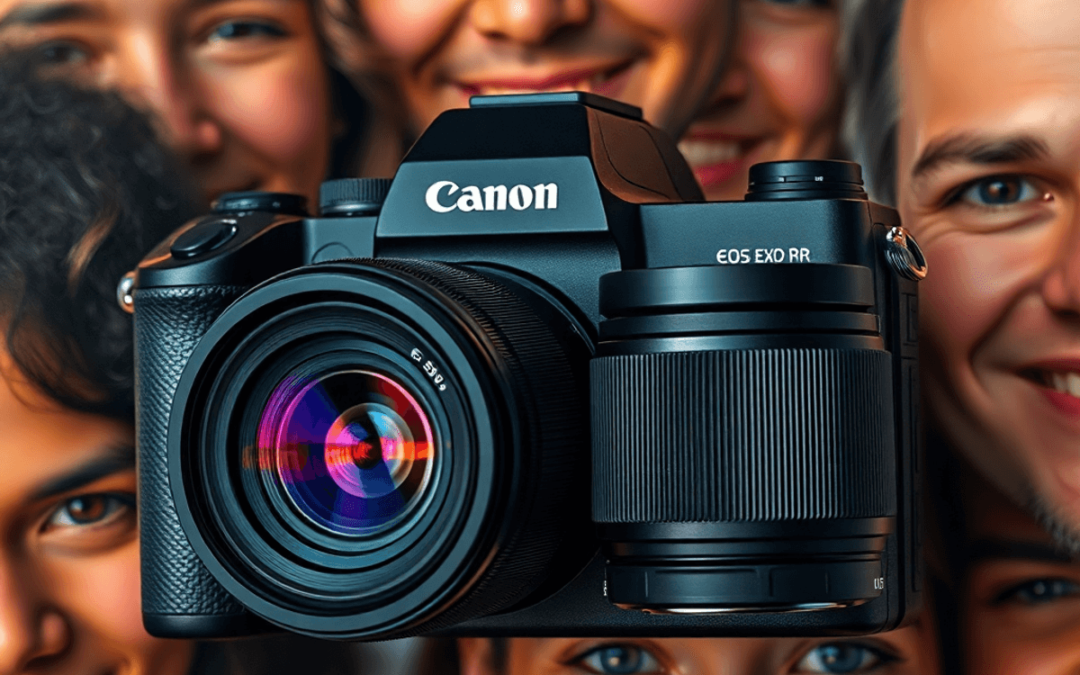Capturing authentic facial expressions is one of the most rewarding aspects of portrait photography. But choosing the right lens can make all the difference.
If you’re using the Canon EOS RP, you might be wondering whether the 35mm or 50mm lens is better for this purpose.
Both lenses have their strengths, but which one is ideal for capturing those perfect facial expressions?
In this guide, we’ll compare the Canon EOS RP with a 35mm vs 50mm lens, helping you decide which one suits your portrait photography needs.
Canon EOS RP 35mm vs 50mm: Which Lens is Better for Facial Expressions?
When it comes to portrait photography, the lens you choose can significantly impact the final result.
The Canon EOS RP is a versatile mirrorless camera, but pairing it with the right lens is key to capturing stunning facial expressions. Let’s break down the differences between the 35mm and 50mm lenses.
35mm Lens: Wide and Expressive
The 35mm lens is a popular choice for environmental portraits.
It offers a wider field of view, allowing you to include more of the background while still focusing on your subject’s facial expressions.
This makes it ideal for storytelling and capturing candid moments.
- Pros:
- Great for full-body or half-body shots.
- Adds context to the portrait with background details.
- Perfect for indoor or tight spaces.
- Cons:
- Can distort facial features if you get too close.
- Less compression compared to the 50mm lens.
50mm Lens: Classic and Flattering
The 50mm lens, often referred to as the “nifty fifty,” is a classic choice for portrait photography.
It provides a natural perspective that closely resembles the human eye, making it ideal for capturing facial expressions without distortion.
- Pros:
- Flattering compression for facial features.
- Excellent for close-up portraits.
- Creates a beautiful background blur (bokeh).
- Cons:
- Narrower field of view compared to the 35mm.
- Requires more space for full-body shots.
Key Point #1: 35mm Lens for Environmental Portraits
![Canon eos rp + 35mm vs 50mm lens] to good facial expression A photographer captures an outdoor portrait with a 35mm lens, focusing on a subject with expressive features against a captivating natural backdrop.](https://api.junia.ai/storage/v1/object/sign/user-generated-images/35c2d12b-c47f-47e2-8c62-757c735c9ca3/584c151b-0b15-4050-84f4-c1d7fe5f1cb2.png?token=eyJhbGciOiJIUzI1NiIsInR5cCI6IkpXVCJ9.eyJ1cmwiOiJ1c2VyLWdlbmVyYXRlZC1pbWFnZXMvMzVjMmQxMmItYzQ3Zi00N2UyLThjNjItNzU3YzczNWM5Y2EzLzU4NGMxNTFiLTBiMTUtNDA1MC04NGY0LWMxZDdmZTVmMWNiMi5wbmciLCJpYXQiOjE3MzkyMzYxOTUsImV4cCI6MjA1NDU5NjE5NX0.Wrki0YClGM79dLVLKkzjEZtmgq1-AiM915cY9wluKFc)
The 35mm lens shines when you want to tell a story through your portraits.
Its wider angle allows you to include more of the surroundings, making it perfect for environmental portraits.
For example, if you’re shooting a subject in a bustling city or a cozy café, the 35mm lens can capture both the subject’s facial expressions and the ambiance of the setting.
-
Tips for Using the 35mm Lens:
- Maintain a moderate distance to avoid distortion.
- Use a wide aperture (e.g., f/1.8) to isolate the subject.
- Experiment with angles to add depth to your composition.
| RELATED: Best Lenses for Canon EOS RP |
Key Point #2: 50mm Lens for Flattering Close-Ups
![Canon eos rp + 35mm vs 50mm lens] to good facial expression A close-up portrait of a smiling person with expressive features, set against a softly blurred background, showcasing warmth and personality in natural light.](https://api.junia.ai/storage/v1/object/sign/user-generated-images/35c2d12b-c47f-47e2-8c62-757c735c9ca3/833d06d7-4bfc-4933-8a89-6b21ed77f89a.png?token=eyJhbGciOiJIUzI1NiIsInR5cCI6IkpXVCJ9.eyJ1cmwiOiJ1c2VyLWdlbmVyYXRlZC1pbWFnZXMvMzVjMmQxMmItYzQ3Zi00N2UyLThjNjItNzU3YzczNWM5Y2EzLzgzM2QwNmQ3LTRiZmMtNDkzMy04YTg5LTZiMjFlZDc3Zjg5YS5wbmciLCJpYXQiOjE3MzkyMzYxMjYsImV4cCI6MjA1NDU5NjEyNn0.Z6WGKHM843NZtN0uE539yyeeYnX54AyNgpXHdW_IQxQ)
If your goal is to focus solely on your subject’s facial expressions, the 50mm lens is the way to go.
Its natural perspective and flattering compression make it a favorite among portrait photographers.
Whether you’re shooting headshots or close-ups, the 50mm lens ensures that your subject’s features are rendered beautifully.
-
Tips for Using the 50mm Lens:
- Get closer to your subject for intimate shots.
- Use a wide aperture (e.g., f/1.4) for creamy bokeh.
- Pay attention to lighting to highlight facial expressions.
| RELATED: Portrait Photography Tips for Beginners |
Key Point #3: Choosing the Right Lens for Your Style
![Canon eos rp + 35mm vs 50mm lens] to good facial expression A split image showing a vibrant outdoor group portrait on one side and a close-up of an expressive face on the other, with a softly blurred background and natural lighting.](https://api.junia.ai/storage/v1/object/sign/user-generated-images/35c2d12b-c47f-47e2-8c62-757c735c9ca3/12bab898-d7a7-4bfa-b132-b916c615bfa9.png?token=eyJhbGciOiJIUzI1NiIsInR5cCI6IkpXVCJ9.eyJ1cmwiOiJ1c2VyLWdlbmVyYXRlZC1pbWFnZXMvMzVjMmQxMmItYzQ3Zi00N2UyLThjNjItNzU3YzczNWM5Y2EzLzEyYmFiODk4LWQ3YTctNGJmYS1iMTMyLWI5MTZjNjE1YmZhOS5wbmciLCJpYXQiOjE3MzkyMzYwOTQsImV4cCI6MjA1NDU5NjA5NH0.buz_LdNQuTZPeA2K1r7MTT7u2MiO9AOx-23WeiDSLzo)
Ultimately, the choice between the 35mm and 50mm lens depends on your photography style and the story you want to tell.
If you prefer candid, storytelling portraits, the 35mm lens is a great option.
On the other hand, if you’re focused on capturing flattering, close-up facial expressions, the 50mm lens is the better choice.
-
Considerations:
- Shooting environment (indoor vs. outdoor).
- Desired level of background inclusion.
- Your subject’s comfort and posing style.
|
Call To Action
Ready to take your portrait photography to the next level?
Whether you choose the 35mm vs 50mm lens for your Canon EOS RP, mastering facial expressions is key to creating stunning portraits.
Share your experiences in the comments below, and don’t forget to explore our [website for your photography website design] for more tips and recommendations!
FAQs
1. Is the 35mm or 50mm lens better for beginners?
The 50mm lens is often recommended for beginners due to its simplicity and natural perspective.
However, the 35mm lens is also beginner-friendly and offers more versatility for different types of shots.
2. Can I use the 35mm lens for close-up portraits?
Yes, but be cautious of distortion when shooting too close.
Maintain a moderate distance to keep facial features natural.
3. Which lens is better for low-light photography?
Both lenses perform well in low light, but the 50mm lens typically has a wider maximum aperture (e.g., f/1.4), making it slightly better for low-light conditions.
4. Should I invest in both 35mm and 50mm lenses?
If your budget allows, having both lenses gives you more flexibility.
The 35mm is great for environmental shots, while the 50mm excels in close-up portraits.

